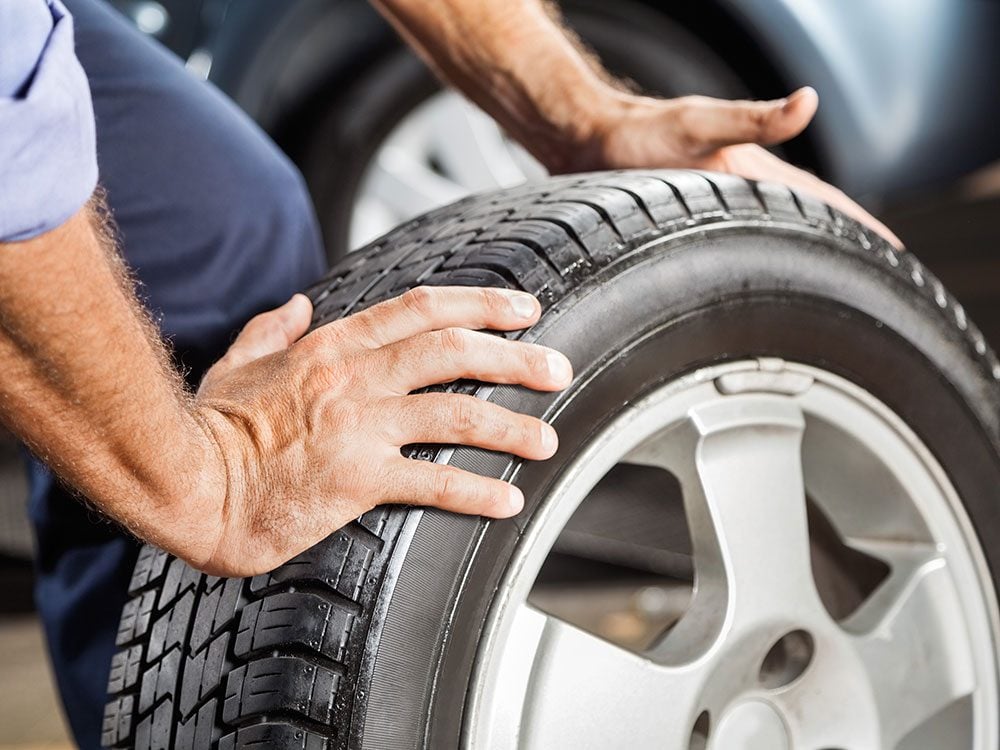
How to extend the life of your tires
Most car owners ignore their tires until it’s too late, and then they have to spend big bucks to replace them. However, you can diagnose tire problems and correct them early by performing three critical tire maintenance jobs: checking the tire pressure, measuring the tread depth regularly, and rotating tires approximately every 10,000 kilometres. Read on for the step-by-step details involved in each of these tasks.
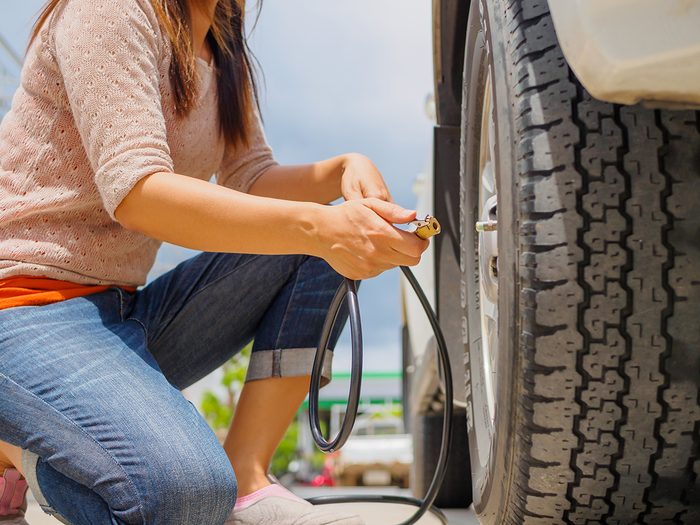
Check your tire pressure every month
Inflate to the pressures listed on the car maker’s decal (which can be found on the driver’s door or in the door jamb). Do not use the maximum pressure listed on the tire. The recommended tire pressure is based on the weight of your particular vehicle, not the tire brand or tread style.
Here’s how to check tire pressure like the pros.
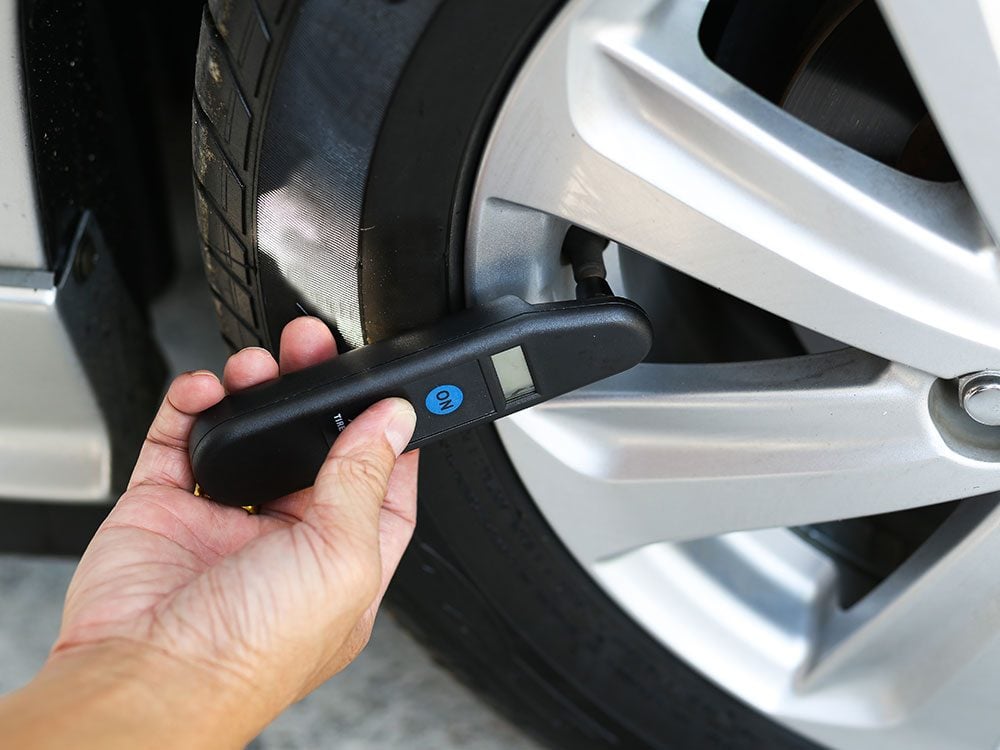
Use a digital pressure gauge
All tires lose air, so check each one monthly as part of your car maintenance chores. Always use the same tire pressure gauge and check the air pressure first thing in the morning, not after you’ve driven the car or if the car has been sitting in the hot sun. Digital gauges are easier to read and more accurate than traditional gauges.
Here are 20 essential auto tools for the home mechanic.
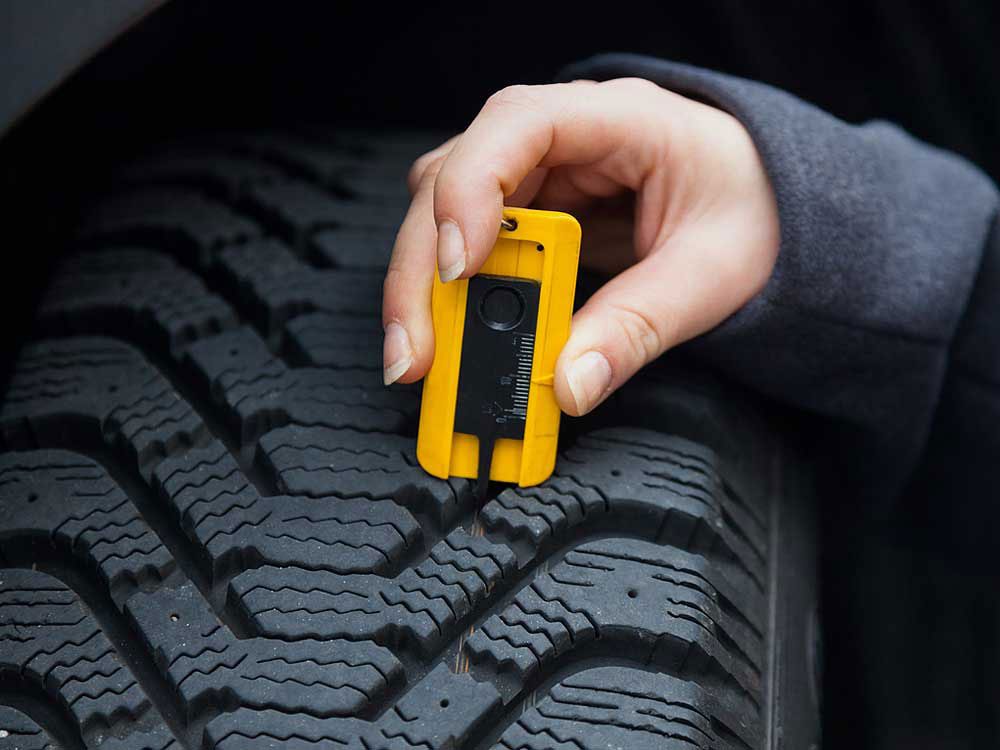
Use a tread-depth gauge every other month
The front tires on front-wheel-drive cars carry a heavier load and perform more work (steering and braking). For this reason, they tend to wear out faster than the rear tires. Rotating your tires every 10,000 kilometres spreads the wear across all four tires. Skip this maintenance chore and you’ll find yourself with two bald tires at the front of the car and two halfway good tires at the back. You’ll lose about 25 per cent of the tire set’s life.
Find out what it means if you see a red or yellow dot on your tire.
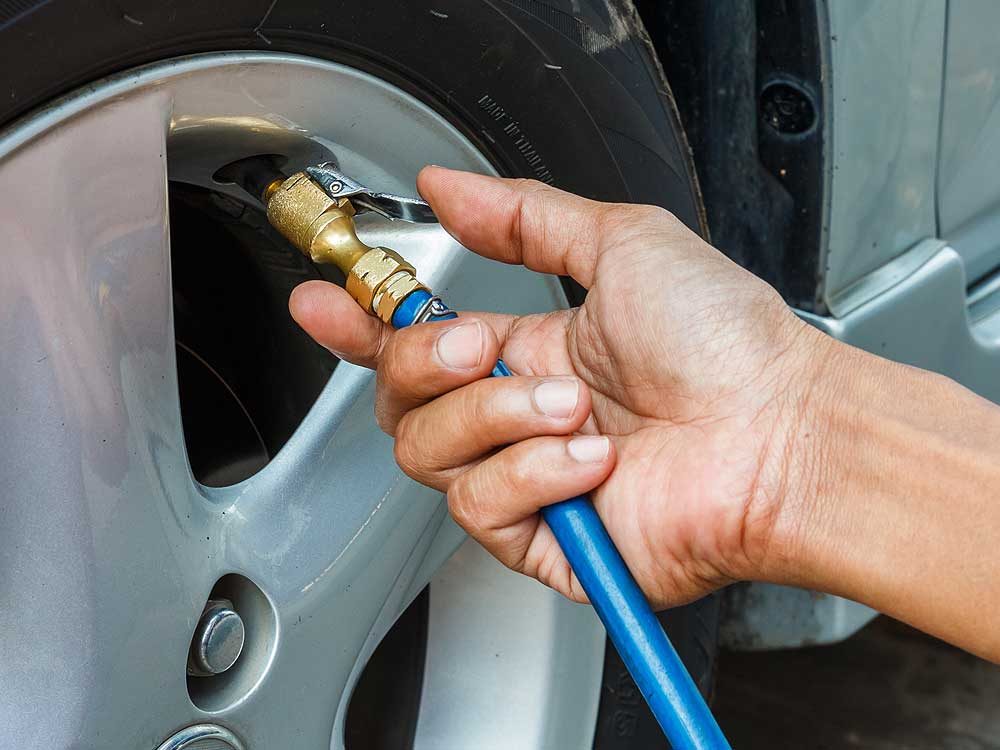
Never inflate tires to the maximum pressure!
Never assume that the maximum air pressure shown on the tire’s side wall is the same as the recommended tire pressure. Filling to the maximum pressure always means you’re over-inflating your tires. The recommended tire pressures for your car are printed on the driver’s door or the doorpost decal.
Although over-inflated tires may give you slightly higher gas mileage, they can cause much more serious problems than they solve. Over-inflated tires carry the entire weight of the car on the middle portion of the tread. On wet roads, the centre tread can’t pump the water out to the sides (think of a squeegee with a bulge in the middle). In this instance, the tires are more prone to hydro-planing (like water skiing) and also more likely to skid in a stop or in a turn, and blow out on hard bumps. The bottom line is that over-inflation is foolish and dangerous. Always follow the inflation pressures shown on the car, not on the tires.
Next, find out 15 more things you should never do to your car.